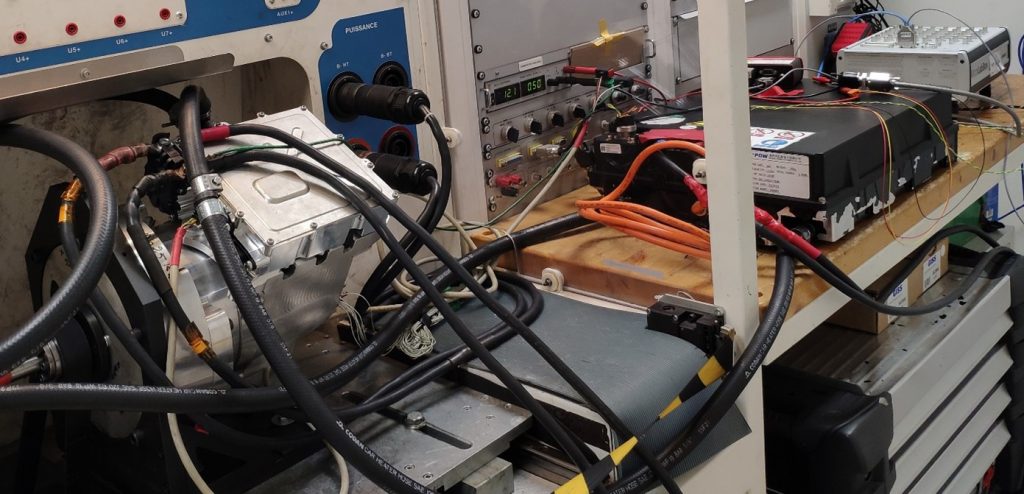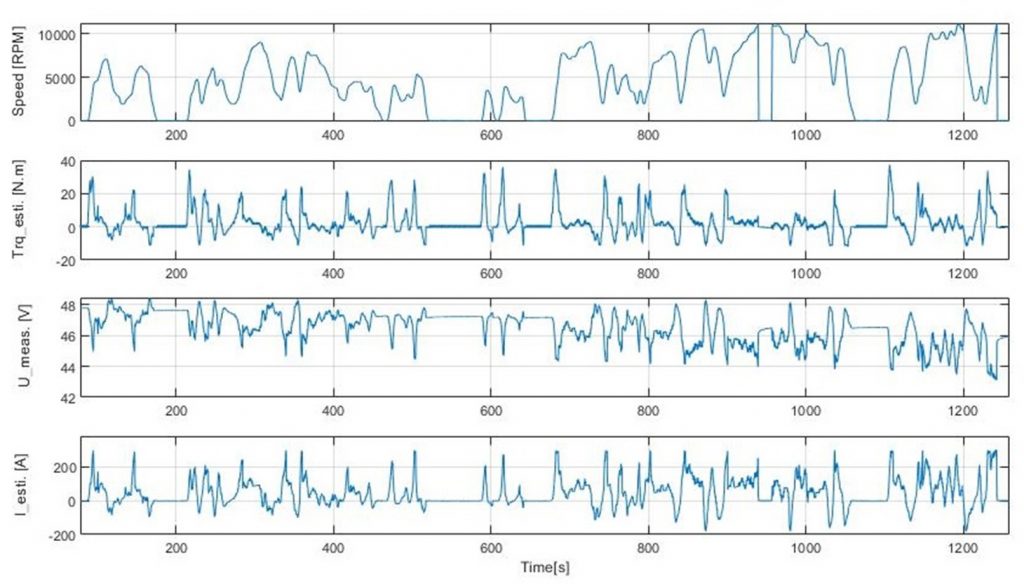Intermediate result from partners ULille, VEEM
This result has been achieved in August 2021, M33 of the project.
A first phase of HiL testing was carried out at Valeo with the help of the University of Lille. The vehicle’s electrical drive was mechanically powered by the test bench and electrically powered by a real Li-ion battery (Figure 1). The bench is driven by the vehicle simulation that has been developed by ULille using the PANDA methodology and available on the PANDA cloud. The aim of this first phase was to test the proper functioning of the various interfaces and to test the vehicle strategy developed by ULille. Measurements of the Valeo’s e-drive were also carried out (Figure 2).
- Objective: The objective was to test the correct functioning of the test method, and to obtain initial results on the electrical drive thanks to the real-time simulation of the complete vehicle.
- Research: The main point was to interface the vehicle strategy developed by ULille, with the real machine used in the democar. This was done on a test bench in the first step using HIL testing with real-time simulation of the complete vehicle as developed for PANDA.
- Result: The interface between simulation and reality was successful and it allowed the acquisition of some measurements. The simulation of the vehicle has a real-time interaction with the tested e-drive.
- What will it be used for: The next step is to implement tests on the democar. This HIL testing using the vehicle simulation was a necessary valuable step before the integration of the new energy management strategy on the real vehicle.
- Impact: These results come at the end of the project to validate the methods developed during the earlier research work. But the virtual prototype (pure vehicle simulation) and the real prototype (HIL testing using the real-time vehicle simulation) are key steps in the development phase.

Figure 1: Valeo’s E-drive supplied by the Li-ion battery (with ULille’s RCP card to control the test bench)

Figure 2: HiL results with the real E-drive and the simulated ULille’s vehicle strategy